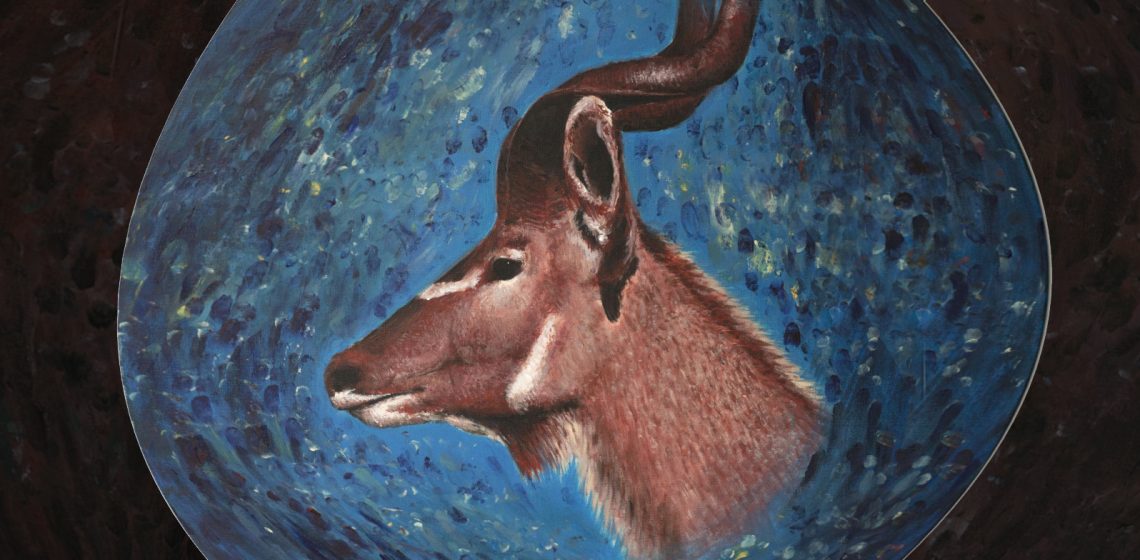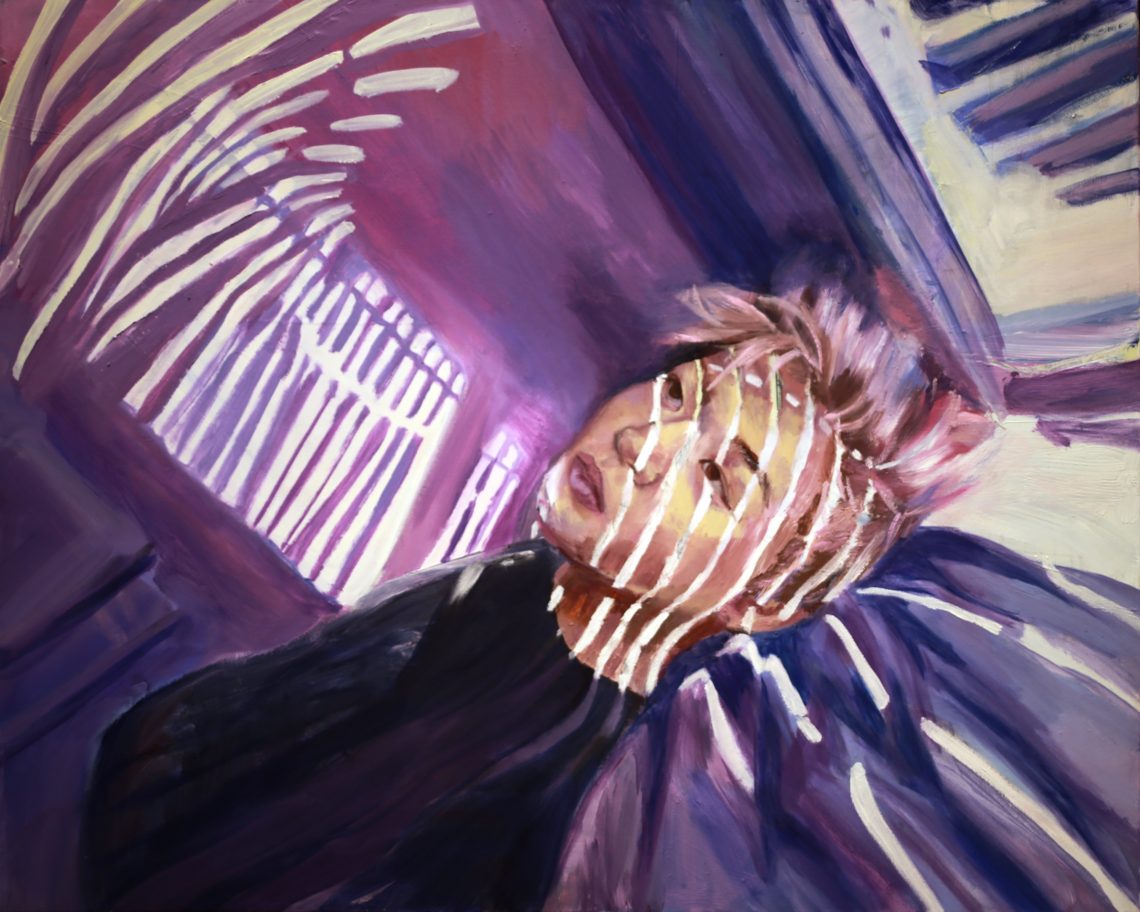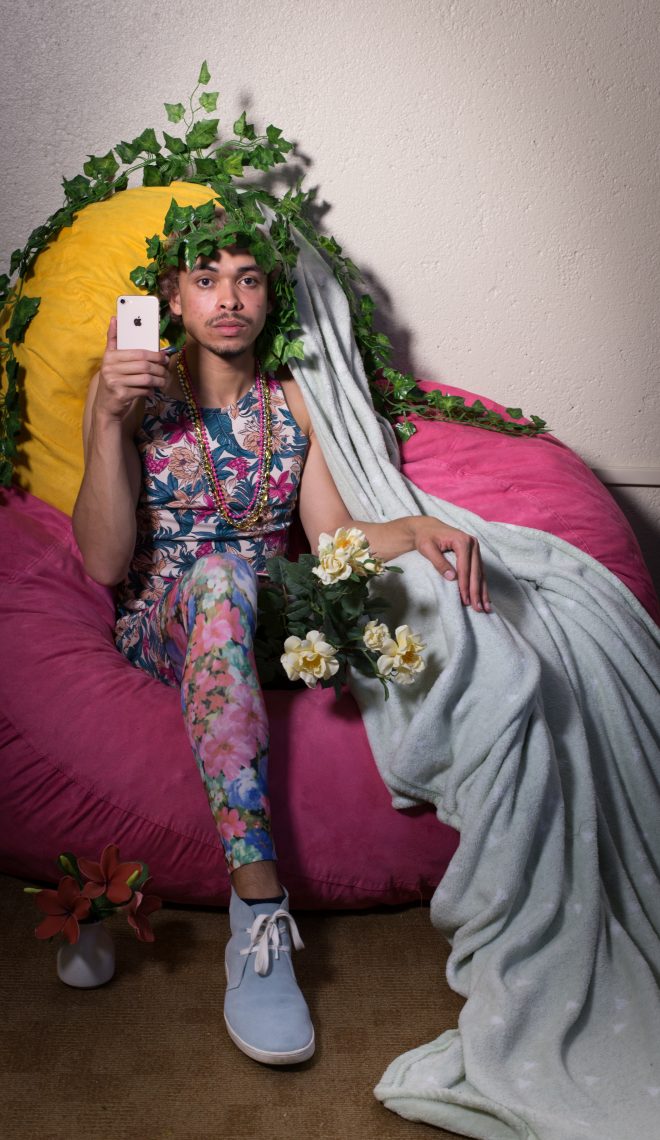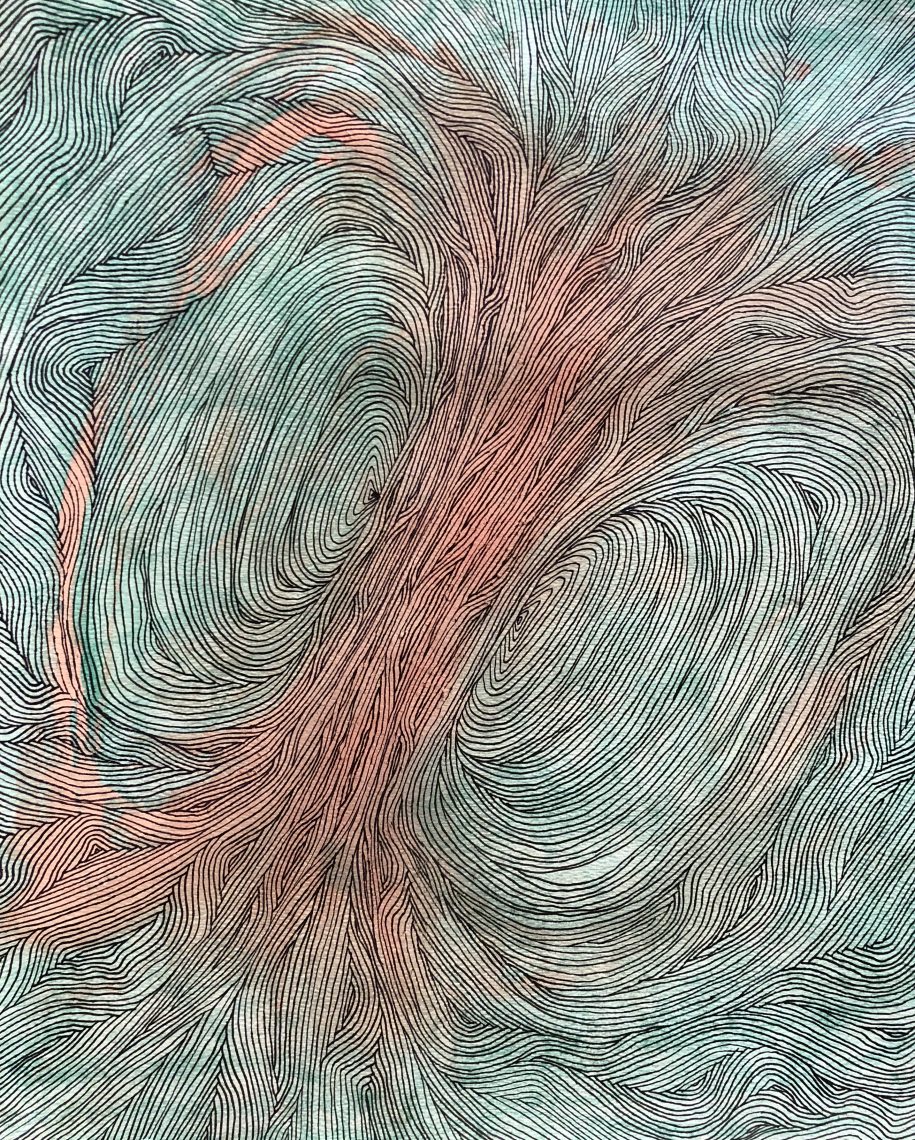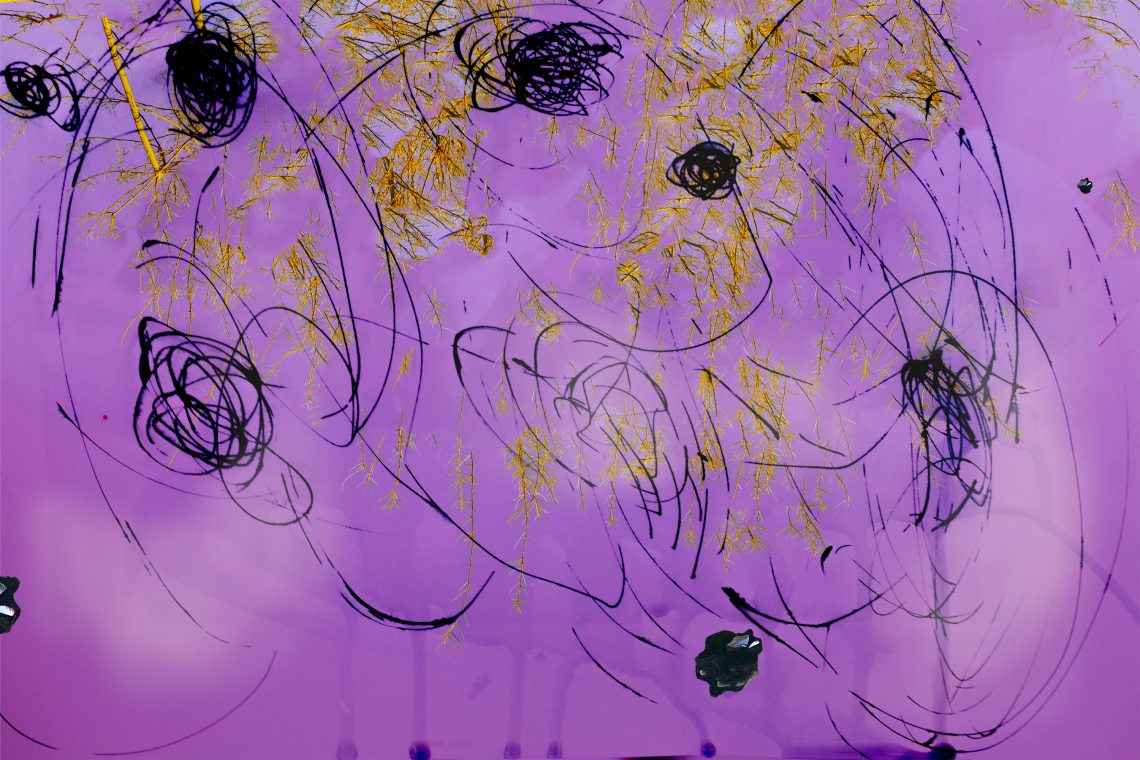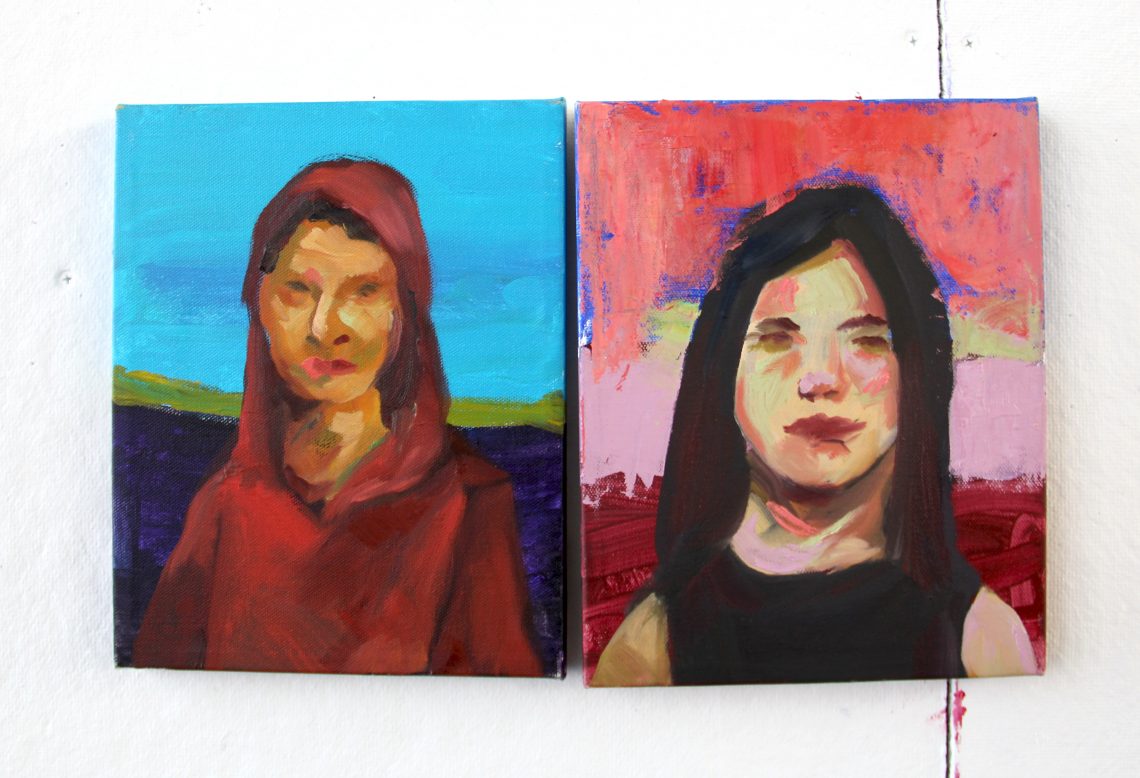-
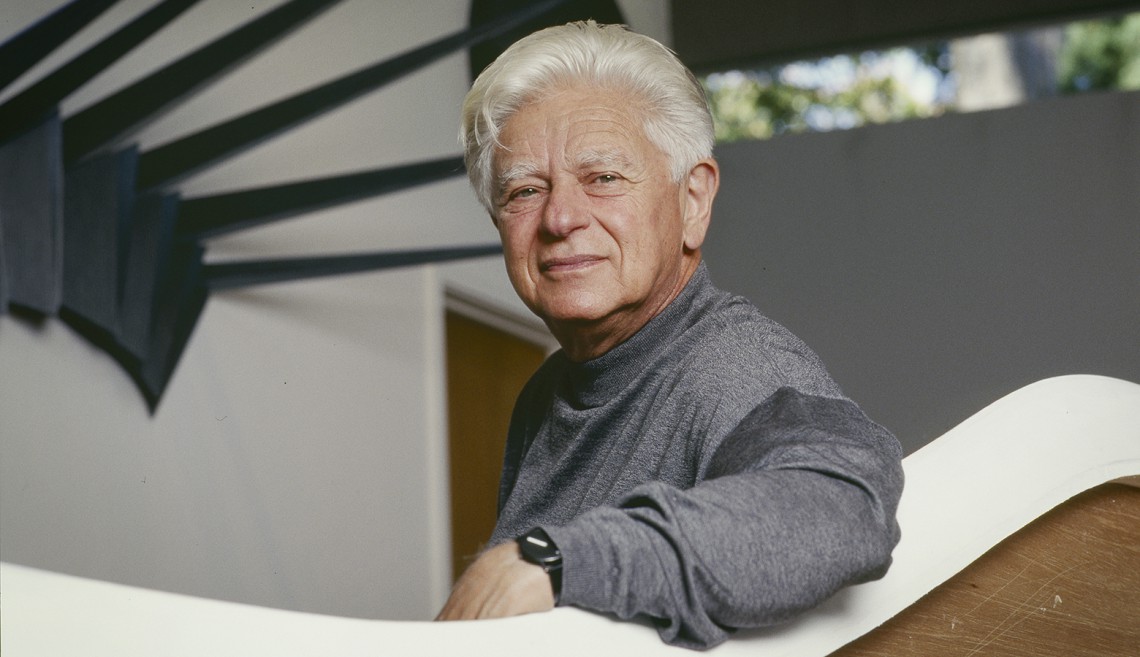
Professor Matt Kahn in his studio in 1999.
L.A. Cicero -

The front yard of Matt Kahn's Stanford home was filled with pumpkins every Halloween. His design students had an annual pumpkin-carving assignment and the driveway was their gallery.
L.A. Cicero -

Matt Kahn with student in Art Design class in 1972.
Chuck Painter -
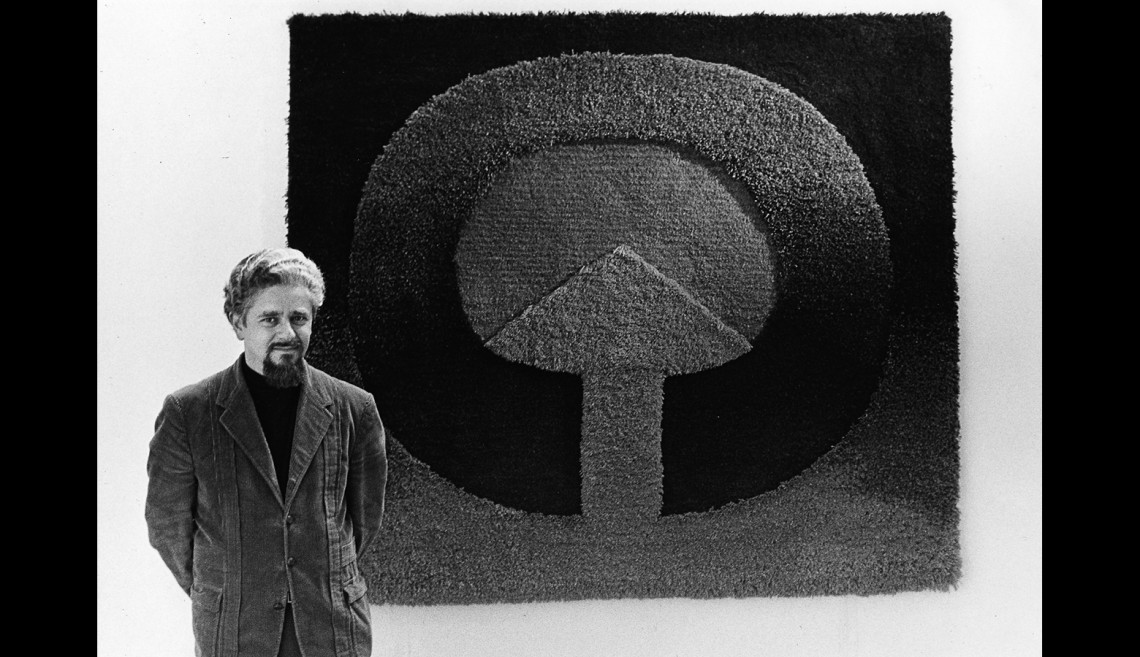
Matt Kahn with textile piece 'Avanti' in September 1970.
Jose Mercado -
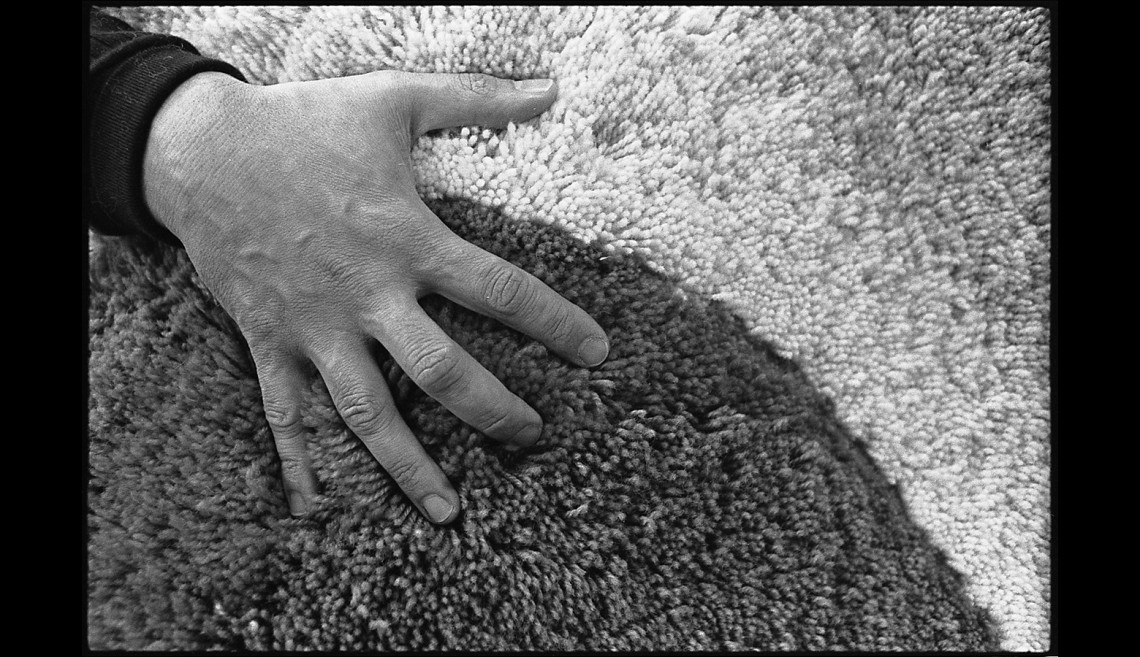
Matt Kahn with a textile piece in 1968.
Chuck Painter -
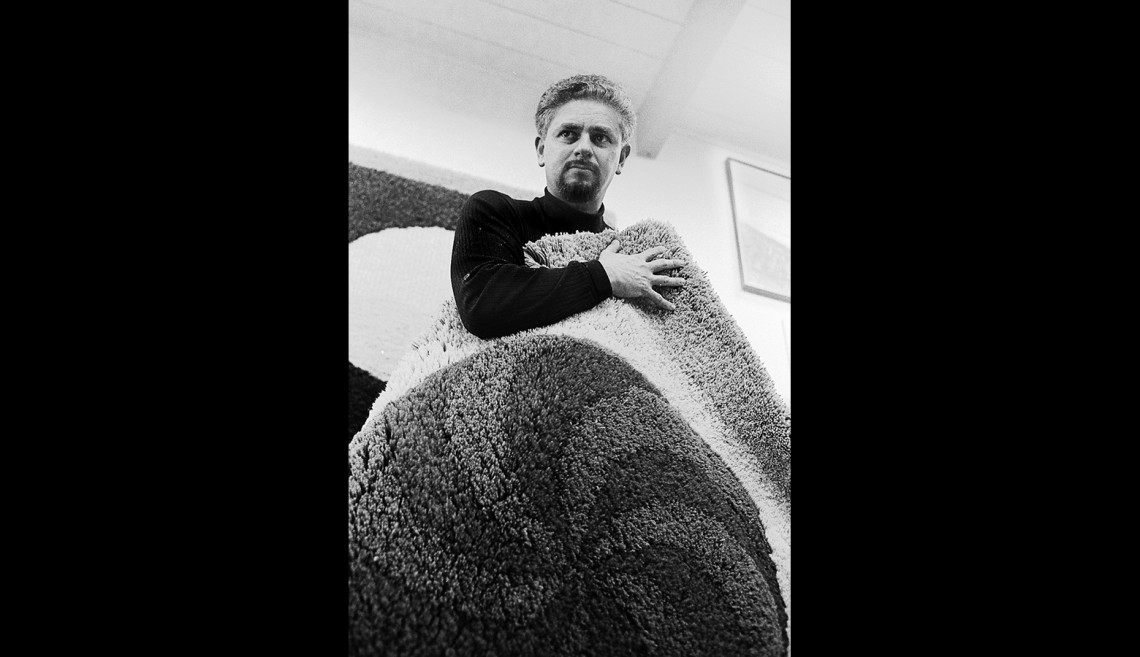
Matt Kahn with a textile piece in 1968.
Chuck Painter -

Professor Matt Kahn and students sketching Michelangelo's David during the 1962 Overseas Studies program, Florence, Italy.
Stanford News Service Archive -

'Palio I,' (1989, acrylic) on view as part of 'Matt Kahn: A Commemorative Exhibition - 55 Years of Teaching at Stanford.'
L.A. Cicero -
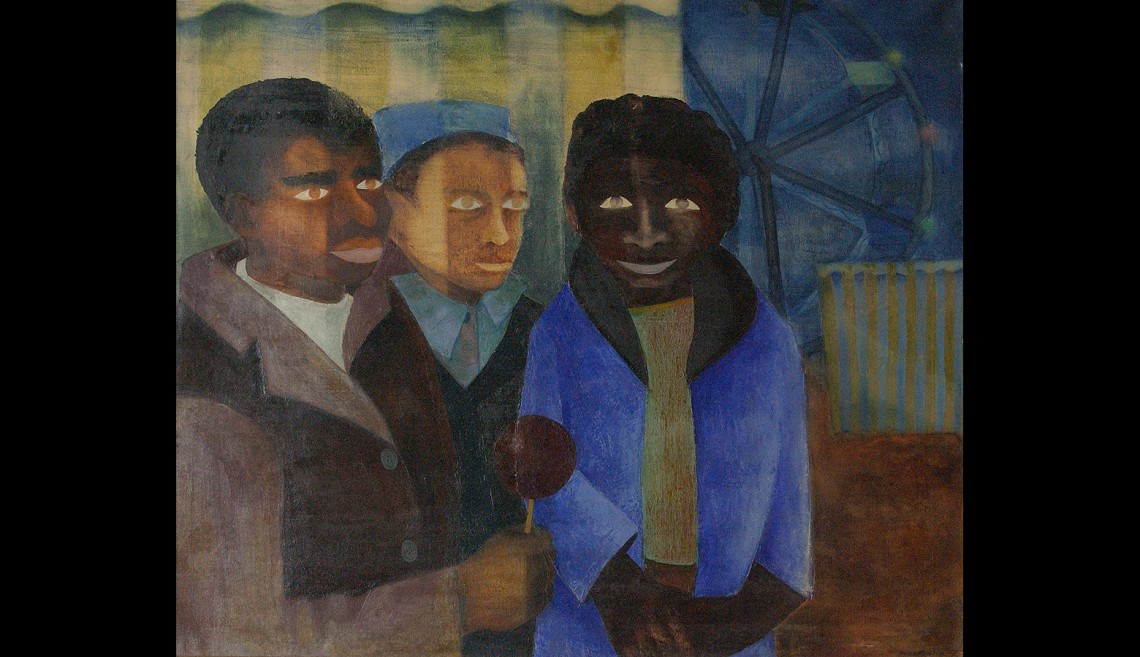
An untitled oil painting by Matt Kahn from 1947.
L.A. Cicero -

Powdered Man II (Oil, 1990) by Matt Kahn.
L.A. Cicero -

'Egg Hunt' (2005, acrylic) detail from the Matt Kahn exhibit at the Stanford Art Gallery in 2006.
L.A. Cicero -

Kahn looks over the Thomas Welton Stanford Art Gallery, which featured a retrospective exhibition of his work in 2006.
L.A. Cicero
Matt Kahn, pioneer in design coursework and Stanford professor emeritus, dies
Matt Kahn, who taught for more than 60 years, was a painter, designer, art collector and beloved professor in the Department of Art and Art History.
Stanford Professor Emeritus Matt Kahn died at his Stanford home on June 24. He was 85.
Kahn was born on May 29, 1928, in New York City, the son of Jess and Julia Kahn. He studied at Cranbrook Academy of Art in Bloomfield Hills, Mich., where he met Lyda Weyl, his wife and partner in life and work.
David Kelley, one of Kahn’s former students who is now the head of the Hasso Plattner Institute of Design at Stanford, and founder of design firm IDEO, remembers him with awe and appreciation: “He was my friend, colleague and mentor for nearly 40 years, and I was lucky enough to teach with him for most of that time. He taught me, along with hundreds of other students over six decades, to be proud of being a designer.
“No one could speak as eloquently, insightfully or as inspiringly as Matt could about design and its relation to art. When listening to him lecture, I was truly in awe. He was also world class at helping students through his critique of their work. I have never seen anyone do it better. All of us remember things that Matt told us that we use and share with others in our lives all the time.”
Everyone who worked with him is always thinking, ‘How would Matt do this?’
When he was 21, Kahn joined Stanford’s Department of Art (now the Department of Art and Art History). That was in 1949, and over the following 60 years he created pioneering coursework in design and also taught painting, drawing, sculpture and color theory.
He was appointed assistant professor in 1953 and professor in 1965. He was the director of the U.S. State Department Craft Development Program in Cambodia in 1957-58 and taught frequently at Stanford’s overseas studies program in Florence, Italy. In 1993 he received the Dean’s Award for Distinguished Teaching and was heralded for his “consistent vitality and enthusiasm” and for being “an opener of doors, a stimulus and guide to the realm of possibilities” who “creates a dazzling environment” for his students.
“He inspired his students to pursue lives driven by heart and beauty,” Kahn’s family said in a statement. “His relentlessly high standards and passion for excellence were legendary, creating an extraordinary level of achievement on the part of his students and a lasting bond between them and their beloved professor.”
Kahn retired from teaching in 2009 but continued to guest lecture for his colleagues until 2011.
He traveled extensively and was influenced by the richness he found in tribal cultures and art from around the world, much of which he collected and displayed in his iconic Eichler home on the Stanford campus. Matt and Lyda Kahn designed their home during the many years they collaborated with Joseph Eichler. It was featured in the New York Times Magazine in 2001.
Former students will remember Kahn’s home for the Halloween tradition of carving and displaying their pumpkins on his driveway.
Kahn’s paintings, a blend of precise design, inventive form and a sharp sense of humor, were inspired by nature, humanity and the classical music he loved. His work is included in several art books and has been shown in solo and group exhibitions in Italy and the United States, including shows at the Museum of Modern Art in New York, the San Francisco Museum of Modern Art, the de Young Museum in San Francisco and several exhibitions at the Thomas Welton Stanford Art Gallery commemorating milestones in his teaching career.
“It’s hard to imagine a more fortunate conjunction of a person’s life and an institution. Every aspect of Matt’s life was devised to support design at Stanford. He worked at it tirelessly,” said Joel Leivick, a teaching professor of photography. “Matt started teaching at Stanford before I was born, and I’ve been here 32 years.”
Kelley added: “A day rarely goes by that I don’t realize I am doing something in a specific way because I knew Matt. Everyone who worked with him is always thinking, ‘How would Matt do this?’ And we do it at least a little bit better because we model ourselves after him as designers. He was tremendously important to more people than he ever realized. I miss him already. I always will, and so will all of his students and friends. He was an exceptional person.”
Kahn is survived by his son, Ira (AB Art ’72), and daughter, Claire (AB Art ’77). The family requests that memorial donations be made to Americans for the Arts. An event to celebrate Kahn’s life and memory will be announced in the coming months.












